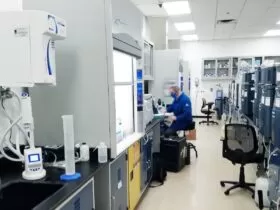Technology has brought significant changes in every aspect of human life, including the education sector. The use of technology in education has become increasingly popular in recent years, and it has greatly impacted academic performance. This article will explore the use of technology in education and its impact on academic performance.
Positive impacts of technology on academic performance
From helping students stay organized to providing opportunities for collaboration with peers, there are countless ways that technology can help students succeed academically. Let’s explore some of the positive impacts of technology on academic performance.
Access to educational resources
The internet has revolutionized the education sector, making it easier for students to access a wealth of information from various sources. With technology, students can access online libraries, journals, and databases, which provide a wide range of materials that can supplement traditional classroom learning. Additionally, students can engage in online discussions and forums where they can interact with their peers and teachers from different parts of the world.
When it comes to finance essay writing, students can benefit from the wealth of information available online. They can access articles, reports, and blog posts related to financial topics. Additionally, they can find sample essays and other resources that can give them a better understanding of how to structure their essay and present their ideas.
Enhances student engagement and motivation
Technology has made learning more interactive and engaging. With multimedia tools such as videos, animations, and simulations, teachers can present complex concepts in an interesting and interactive way, which helps to keep students motivated and engaged. Online learning platforms, such as Moodle and Blackboard, offer students personalized learning experiences, allowing them to learn at their own pace and in their own time.
Personalized learning
Technology has made it easier for teachers to cater to the needs of individual students. With adaptive learning software, teachers can track the progress of each student and provide personalized feedback and support. This helps to ensure that students are challenged at their own level and that they receive the necessary support to achieve their academic goals.
Negative impacts of technology on academic performance
While the use of technology in classrooms has allowed for more interactive learning experiences, there is an undeniable downside to its presence as well.
Distraction and multitasking
While technology can be an effective learning tool, it can also be a source of distraction for students. The constant notifications and alerts from social media platforms and messaging apps can disrupt students’ concentration and make it difficult for them to focus on their studies. Additionally, students may be tempted to multitask, such as watching videos or browsing the internet while in class, which can negatively impact their academic performance.
Dependence on technology
As students become more reliant on technology, they may become less able to perform tasks without it. For example, students may struggle to write essays or complete assignments without access to the internet or word processing software. This dependence on technology can hinder the development of critical thinking and problem-solving skills.
Isolation and lack of social skills
Technology can also contribute to social isolation among students. Online learning platforms may provide a convenient way for students to study, but they may miss out on the social interactions that are essential for their social and emotional development. Additionally, students who spend too much time on their devices may develop poor communication and social skills.

Strategies for effective use of technology in education
From online courses to virtual reality simulations, technology can provide students with engaging educational experiences that go beyond traditional textbooks and lectures. However, if not used properly or effectively implemented, it can be a distraction instead of an asset. That’s why it’s important to understand how to use technology effectively in the classroom.
Setting technology boundaries
To prevent technology from becoming a source of distraction, it is important to set clear boundaries around its use. Teachers can establish rules around the use of devices in class and encourage students to switch off their phones and laptops during lectures. Additionally, students can use apps like Forest or Freedom to limit their access to distracting websites and apps.
Teaching digital literacy skills
As technology becomes more prevalent in our daily lives, it is essential that students learn digital literacy skills to succeed in the modern world. Digital literacy refers to the ability to use and evaluate digital tools and information effectively, including navigating online platforms, critically evaluating information sources, and understanding online privacy and security.
Encouraging collaboration
Collaboration is an essential component of learning. Teachers can use technology to encourage collaboration among students, such as through online group projects, virtual discussions, and peer review. This not only enhances students’ understanding of the subject matter but also helps to develop their communication and teamwork skills.
FAQs
Is technology use in education always beneficial?
No, technology use in education can also have negative impacts, such as leading to distraction and social isolation.
How can teachers use technology to enhance student engagement?
Teachers can use multimedia tools such as videos, animations, and simulations, and online learning platforms to make learning more interactive and engaging.
How can students avoid the negative impacts of technology on academic performance?
Students can set clear boundaries around technology use, develop digital literacy skills, and prioritize face-to-face interactions with peers and teachers.
Can technology replace traditional classroom learning?
No, technology should be seen as a complement to traditional classroom learning, not a replacement.
How can collaboration be encouraged through technology?
Teachers can use technology to facilitate online group projects, virtual discussions, and peer review, which help to develop students’ communication and teamwork skills.
Conclusion
Technology has the potential to enhance academic performance by providing students with access to educational resources, personalized learning, and interactive and engaging learning experiences. However, it can also negatively impact academic performance by leading to distraction, dependence, and social isolation. To ensure that technology is used effectively in education, it is important to set clear boundaries, teach digital literacy skills, and encourage collaboration.

























